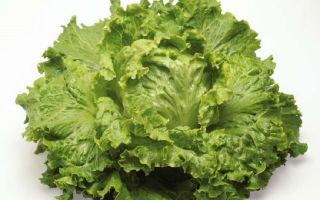Content
- 1 Types of lettuce
- 2 The chemical composition of lettuce leaves
- 3 Calorie content and nutritional value of lettuce
- 4 Why leafy salad is useful for the body
- 5 Is it possible to give lettuce to children
- 6 Slimming Lettuce
- 7 How to use lettuce leaves medicinally
- 8 What can be made from lettuce
- 9 Daily allowance for lettuce
- 10 The use of lettuce in home cosmetology
- 11 How to choose the right salad leaves
- 12 Harvesting lettuce for the winter
- 13 Conclusion
Culinary experts consider leafy salad to be just a godsend. Besides the fact that it perfectly decorates dishes, makes them very original and appetizing, its nutritional qualities are widely known. An important advantage of the leaves is the early growth period. While the rest of the vegetables ripen, it is already on the table. Therefore, the benefits and harms of lettuce leaves should be known to every housewife. Especially if you want to use a product that is useful for the body not only right away, but also save it for the winter.
Types of lettuce
There are two large conventional groups of salads - cabbage and leafy. If earlier the leaves were used mainly to decorate the dish, now it is the benefits of green salad for the body that have caused its popularity to grow. Varieties differ not only in size and color, but also have different tastes. Choosing the right plant is not difficult. The most common are such leafy varieties:
Batavia
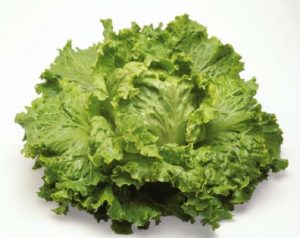
The earliest species with large leaves, wavy at the ends. Has a very delicate taste and good juiciness. Used in vegetable recipes, sandwiches and vegetable snacks.
Arugula
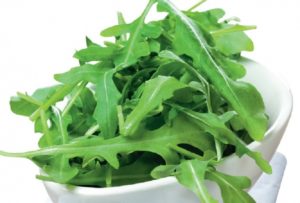
Mega-popular variety due to its taste parameters and positive effect on the body. Strengthening the immune system, helping the digestive tract and improving metabolism are invaluable qualities of lettuce leaves. A relative of dandelion with a spicy aroma and an unusual nutty mustard flavor. It grows in separate stems, it makes an excellent combination with cherry tomatoes, balsamic vinegar and olive oil.
Lollo Rossa
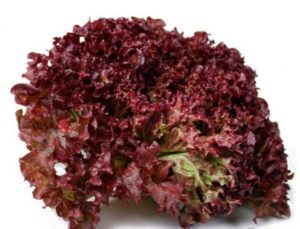
The second known name is coral salad. It is grown in two colors - with red leaves and green. The green species is called Lollo Bionda. The difference from other varieties is an intense nutty taste with a slight bitterness. It goes well with both hot and cold appetizers, spicy and sweet sauces, meat dishes, baked vegetables. Designers grow the plant in the garden as a decoration.
Lettuce
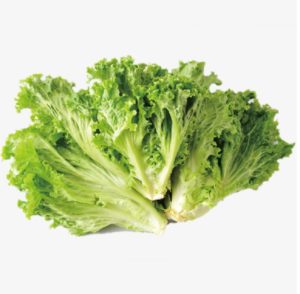
The oldest known salad. There are up to 100 varieties of leaves, which differ in color, shape, configuration. Quite bland taste, almost no hints of bitterness or acidity. Therefore, they are used in combination with bright fresh vegetables or as a lining for any salad.
Watercress

Belongs to the cabbage family. The second name is less sonorous - bedpiper.The stem is very thin, the leaves are small dissected. Differs in very fast growth, 2 weeks after sowing is ready for use. The leaves have a slightly spicy taste, more like mustard, so they are often used for seasoning.
Chard
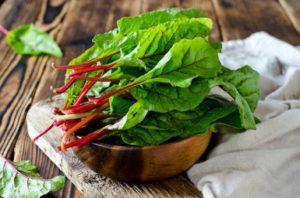
Beetroot, roman cabbage - so called chard. It belongs to the subspecies of common beet, however, not the root vegetable, but the leaves are taken for food.
It goes well with other vegetables in salads, added to cold snacks, borscht, beetroot or casseroles. Housewives use Swiss chard leaves to make stuffed cabbage rolls, which are very tender.
Romaine
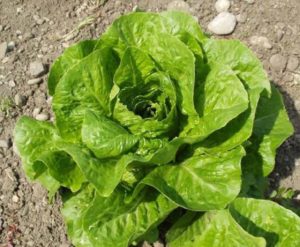
The second known name is Roman salad. The peculiarity of this species is that it does not belong to any of the species, it is considered intermediate. It has long, dense leaves. They are juicy, slightly sweet and spicy. There are many hybrids of Romaine lettuce - Salanova, Dandy, Kosberg, Wendel.
Field salad
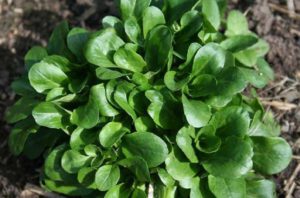
From a weed to an amazing culinary product. It goes well with any spices, but also good on its own. There are many varieties, suitable for combination with smoked fish, bacon, boiled vegetables and poultry.
Spinach
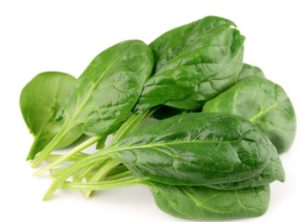
Spinach varieties are varied, the leaves of each of them differ in shape. There are summer and winter spinach varieties. The salad tastes sweet, the leaves are very good fresh and boiled. In many cuisines around the world, it is used to make signature pies, omelets and casseroles.
The chemical composition of lettuce leaves
Lettuce leaves do not have a high concentration of substances, but the composition is rich and varied. Most of all, they contain fiber, monosaccharides, nitrogenous compounds. B vitamins, tocopherol and carotene prevail in lettuce. There are many minerals and trace elements - iron, manganese, titanium, aluminum, molybdenum, zinc. Naturally, their set and quantity depends on the composition of the soil on which the plant grows.
The chemical composition changes under the influence of environmental conditions. Leafy species contain more carotene, ascorbic acid and dry matter than cabbage ones. In addition to its culinary value, leaf lettuce has many health benefits.
Calorie content and nutritional value of lettuce
The leaves of the plant are very popular due to the low calorie content of the product. For 100 grams of leaf lettuce, the calorie content ranges from 14 kcal or 58 kJ, depending on the variety. With such a low indicator, the culture has a large amount of protein - 1.48 g, and only 0.29 g of fat.
Why leafy salad is useful for the body
The benefits of lettuce leaves for the human body are really enormous. When compared with other foods, one should immediately note the low calorie content and low glycemic index. This explains the recommendations of dietitians on the use of salads for people who are overweight, as well as for diabetics.
The combination with protein products makes the leaves very useful for athletes during strenuous physical activity. And with mental stress, the plant will supply the brain with nutrients, enrich with oxygen, and help avoid excessive consumption of sweets. In addition, beneficial substances will increase overall performance and improve mood.
This is not to say that lettuce leaves of all varieties have the same beneficial properties. But a beneficial effect on the immune system is inherent in any representative of the culture.
For women
The main benefits of lettuce for women are due to the presence of folic acid (vitamin B9) in it. The female body needs it for:
- improving memory, supporting the nervous system in stressful situations;
- increasing immunity, reducing inflammatory processes;
- strengthening the growth of hair follicles;
- slowing down the formation of wrinkles, improving the condition of the skin;
- normalization of blood circulation, prevention of thrombosis, anemia;
- reducing the risk of cancer;
- regulation of hormonal balance;
- improving digestion processes;
- positive effect on metabolic processes, weight loss;
- normalizing sleep, increasing concentration.
This is an incomplete list of the positive effects of lettuce in women.
Hence the conclusion that lettuce leaves are recommended to be included in your diet all year round.
For men
The chemical composition of lettuce leaves is quite complex, it contributes to the production of testosterone. If there is enough of this hormone in the male body, then all organs of the genital area work without problems. Since ancient times, some species have been considered aphrodisiac, such as arugula.
The presence of B vitamins prevents insomnia, irritability, relieves fatigue. The use of lettuce leaves on the body of athletes is very beneficial:
- muscles get toned;
- painful symptoms quickly disappear after increased stress;
- the overall endurance of the body increases.
Also, lettuce leaves supply the male body with substances that promote hair growth, stop the process of baldness.
For pregnant and lactating mothers
Garden salad is of great benefit for expectant and nursing mothers. With the regular use of the plant, the body receives the necessary amount of useful elements for the harmonious intrauterine development of the child. An aqueous infusion of lettuce seeds helps to increase the amount of milk and improve its quality during breastfeeding. During pregnancy, folic acid protects the expectant mother from miscarriage and placental abruption, promotes the absorption of essential nutrients, and improves the functioning of the body's systems.
For the elderly
The daily menu of elderly people must necessarily contain lettuce leaves. The substances in their composition protect brain cells from the pathogenic effects of chemical elements that cause oncological problems. Due to the stimulating effect on neurons, the product is a good prevention of Alzheimer's disease. The elderly are often diagnosed with diabetes mellitus. In this disease, foods with a low GI are indicated. It has a mild laxative effect. Lettuce is on the list of the most recommended greens for diabetics.
Is it possible to give lettuce to children
It has been proven that the plant contains substances that have a calming effect on the child's body. Therefore, it is useful for an active child of any gender to include him in the evening meal. At the same time lettuce leaves strengthen the immune system. It is allowed to use raw salad in the menu of children from 1.5 years of age. And boiled leaves can be given to infants from the moment of vegetable feeding. In addition, kids love beautiful dishes, salad in this business is a great helper for mothers.
Do not give the product for neuro-arthric diathesis in children.
Slimming Lettuce
Often lettuce leaves are used for weight loss, it brings invaluable benefits to the body. It lies in the fact that:
- the dish gets good volume without simultaneously increasing the calorie content;
- the product is available at any time of the year, it is easy to grow at home;
- salad contains an optimal set of micro- and macroelements, amino acids that replenish the body's losses while losing weight;
- leaves are composed of coarse dietary fiber - fiber;
- a large amount of vitamin C helps to quickly break down cholesterol cells;
- there is a powerful detoxification of the body and stabilization of the digestion process.
It can be concluded that the salad diet facilitates the work of the body's systems, supports it during the cleaning period.
How to use lettuce leaves medicinally
The healing properties of lettuce are very diverse. The plant is used in recipes of folk and traditional medicine. The main useful qualities:
- improves the quality and composition of blood;
- protects the body from the manifestation of anemia;
- strengthens the immune system;
- lowers blood sugar levels;
- removes salts;
- strengthens blood vessels and nerve fibers;
- restores muscle tissue;
- helps to get out of depressive states;
- supplies the bone system with calcium.
Leaf lettuce is used not only for preventive purposes, but also as part of the treatment of various diseases.
With gastritis
An important advantage of lettuce over other foods is that it digests quickly and does not weigh down the stomach. With diagnosed gastritis with low acidity, it is used to enhance the secretion of gastric juice. But with increased acidity, the product is contraindicated.
With pancreatitis
There are medical indications for the use of lettuce leaves for disorders of the pancreas. Greens are included in the diet twice a week.
Not all types of lettuce are allowed for patients with pancreatitis. During the period of illness, you will have to exclude watercress and arugula.
What can be made from lettuce
The largest mass of recipes is salads. You can cook them in any combination. Fresh vegetables, feta cheese, chicken, tuna and champignons will do. An excellent option for breakfast is an omelet with lettuce and cheese, green sandwiches.
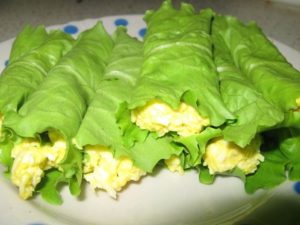
Adding leaves saturates first courses well. The salad is used to prepare aromatic dietary soups, which are also allowed for baby food. The original dish will be a green puree soup.
Daily allowance for lettuce
The use of lettuce leaves is allowed throughout the day. It is best raw, but the product is also very healthy when boiled, stewed or fried. The daily dose for adults is 100 g of fresh leaves. For children under 12 years old, the dose is reduced to 50 g per day.
The use of lettuce in home cosmetology
The green product is very useful for the skin, hair and nails. The most popular types of products are masks or infusions. They are prepared with the addition of various components, used for problems with the condition of the skin and hair. The most important thing is that there are no contraindications for use, the products are suitable for any type of skin.
Facial masks
Lettuce leaves contain up to 90% moisture, therefore they are amazing moisturizers for the skin. In addition, they contain a whole list of useful substances that restore, cleanse, nourish the epidermis. The use of the plant helps to remove flaking of the skin, prevent premature aging.
Recipe with a softening effect for the skin of the hands and face:
- Grind the lettuce leaves.
- At 1 st. l. add 1 tsp mixture. corn oil and 2-3 drops of lemon juice.
- Take 2 tbsp. l. the resulting gruel, mix with 1 tbsp. l. sour cream.
- After application to the skin, keep for 15 minutes, rinse with warm water.
Option that increases the elasticity of the epidermis:
- Mix 3 tbsp. l. salad gruel, 1 tbsp. l. olive oil, 1 tsp. lemon juice.
- Leave on the skin for 20 minutes.
To remove peeling:
- Grind 8 leaves with 3 tbsp. l. sour cream or yogurt.
- Apply in a thin layer, let stand 15 minutes.
Dandruff mask
Burdock oil is useful for hair, which strengthens it and helps to get rid of dandruff:
- Grind the fox salad, add 4-5 drops of burdock oil.
- Apply to scalp, gently massaging.
- Wash off after 20 minutes.
How to choose the right salad leaves
The main criterion is the freshness of the product. Sluggish, discolored or damaged leaves should not be taken. No wax gloss is needed either. Choose greens with a rich natural color. It is important that there is no mucus on the stem. For a culinary specialist, the main goal is to acquire a quality plant, and not strive for its attractiveness.
Harvesting lettuce for the winter
Wash and dry the leaves first.
There are several ways to prepare a useful product:
- Freezing. It is best to cut the leaves into strips, then place them in plastic bags and place in the freezer. You will not be able to use it in salads, you will have to cook omelets, casseroles, mashed soups. Thawed lettuce has no firmness or attractive appearance.
- Drying. Young leaves will do. Store in a tightly closed container after drying. Use as a vitamin supplement and for cosmetic infusions.
- Pickling. It is easy to store lettuce in this form in the refrigerator. Prepare the marinade, put the leaves in a jar, sprinkle with chopped garlic, pour the marinade and cover with oppression. Shelf life is about a month. The marinade recipe can be chosen according to your taste. If you need to roll up the jars, the leaves are pre-fried with garlic and poured with aromatic vinegar.
Conclusion
When used in any form, the benefits and harms of lettuce leaves must be taken into account. This is necessary to properly prepare juicy greens. Just a few leaves a day will significantly improve the general condition of the body and help to acquire an attractive appearance.

